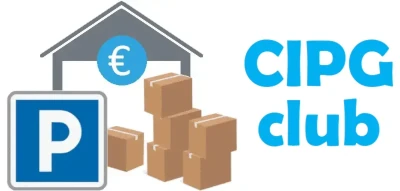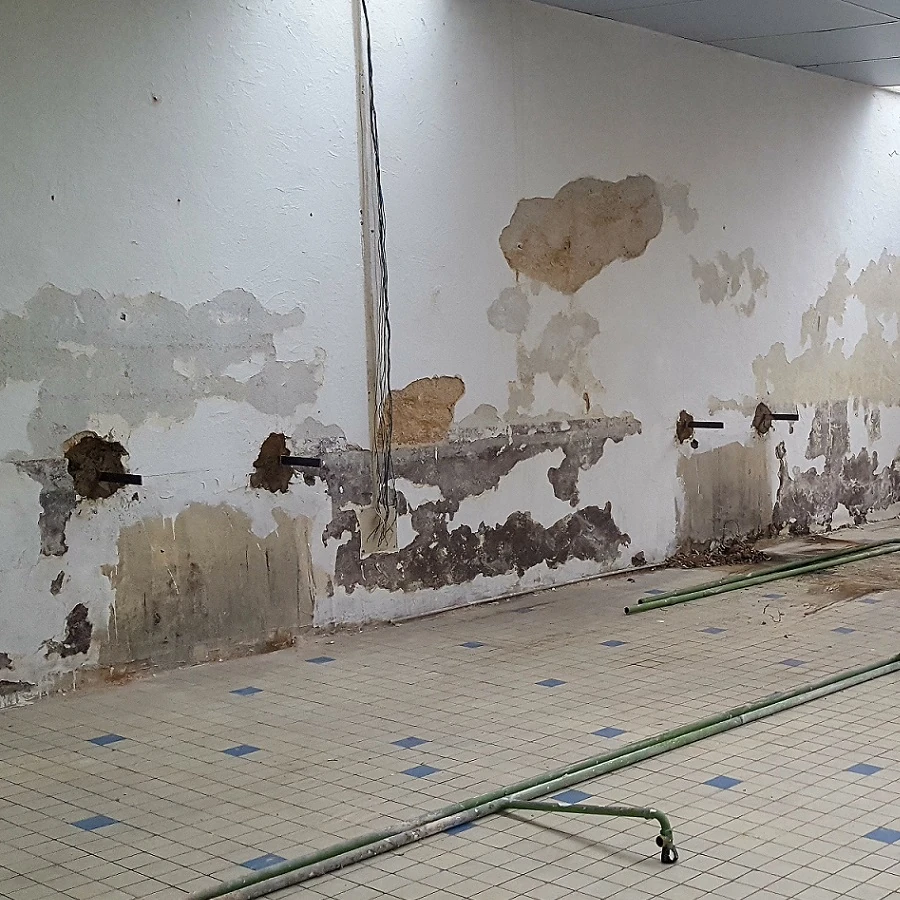Property that is not jointly owned is always more popular with investors, because it’s easier to make decisions on your own. Unfortunately, many properties are governed by co-ownerships. The majority of large developments are governed by co-ownership trustees. Not all owners understand the benefits of attending general co-ownership meetings. In this article, you’ll find out why you risk losing money by staying at home !
📑 Table of contents

What is the purpose of the general meeting of co-owners ?
The general meeting of co-owners takes place at least once a year. The purpose of this meeting is to debate and vote on future budgets and works for the co-ownership.
It all starts when you receive a registered letter with the agenda for the meeting. Once a year, the syndic of a co-ownership must bring together all the owners of a co-owned property to approve the budgets for the coming year. This meeting is also an opportunity to meet all the co-owners and discuss the life of the residence. The meeting begins with the distribution of proxies for absent co-owners, then moves on to the agenda and the various issues. Never forget that the role of a co-ownership trustee is to advise and support all owners.
We can tell you that co-owners’ meetings are often long and boring… But at these meetings, you’ll be talking to all the people you need to know to ensure that your investment is properly managed. For example, if one day you need to divide a parking space or convert a parking space into a lock-up, you need to obtain the agreement of the majority of the co-owners and the managing agent… Maintaining good relations will be essential to carrying out all your projects and boosting your returns.
💡 Did you know : The average attendance rate at co-owners’ meetings is just 20%.
Not going means agreeing to lose money
All spending decisions are taken at this meeting. The voting weight of each owner is assessed on the basis of tantièmes, a kind of quota calculated according to the surface area of each lot. In other words, the more m² you own, the higher your tantièmes, and consequently the greater the weight of your vote. For a parking space or garage, your tantièmes will be lower than those of a homeowner.
Nevertheless, even if they don’t represent much, it’s your presence that will enable you to influence the votes… You have another way of making your opinion known: you can speak out and present your arguments to all the owners. Defend your main interest: the return on your property, the works that will increase your expenses. At a meeting, many owners are hesitant, so you need to support the owners who vote against and insist on their arguments to reduce the condominium’s expenses as much as possible.
Co-owners who are involved but spend
There are different profiles of co-owners in a residence : those who want to spend as little as possible and those who will make all the proposed improvements. In most cases, the high-spending co-owners are often more active and involved than the others. Several members of the club try to liaise with the members of the syndical council. It’s usually a small team of 3 to 6 co-owners who liaise with the professional syndic. You should never neglect the members of the syndic’s council, as they are the ones who will steer the trends in a co-ownership and encourage the others to spend or save money.
As you can see, joining the office of your condominium’s union council is an advantage. With a maximum of one meeting per quarter, this allows you to prepare the ground well while keeping the professional syndic under surveillance. Another solution is to prepare well for each general meeting so that you come with good arguments.
The syndic’s influence on works
A professional syndic will often push for work to be voted on and carried out. The manager of your co-ownership will give advice and recommend that the work be carried out to keep the residence in good condition. You may not be aware of this, but most managing agents take advantage of the work to recover a percentage of their remuneration for awarding and supervising a site. Maintaining the premises is sometimes essential, but other improvements are not always justified…
Solving problems without spending too much
There are always problems to solve in a co-ownership. The best solution is to think about the well-being of the residents and your tenants. Every problem leads to one or more solutions, and being a member of the co-ownership council allows you to steer the most cost-effective solutions.
Here’s an example : a co-owner complains that vehicles are damaging his fence by reversing too far into the car park. As it is very difficult to clearly identify the offending vehicle(s), this owner has already twice contacted the co-ownership insurance company, resulting in increases for claims. The co-owner asked for a radical solution: to install metal posts at the back of each parking space to protect the fence. In this case, the more economical solution would be to install rubber wheel stops on each parking space.
A more radical solution is to keep an eye on any parked vehicle and take photos if it damages the fence, so as to take action against the driver.
Not available : pass on your power
Can’t make it to the AGM ? You need to pass on your voting power to someone else or to your managing agent. We advise you to meet with a trusted landlord, someone who is against unnecessary expenditure, to help you keep your profitability and your money. It is to this person that you should entrust your power to represent you at the co-owners’ meeting.
Soaring costs for building managers
Many co-owners received some unpleasant news on their way to the general meeting. Syndic fees are rising again… They skyrocketed in 2014 when the French Alur law came into force. This sharp rise was supposed to be followed by a stabilisation in fees, but this has not happened. Syndic fees have been rising ever since… Whatever the co-ownership management company, the same reasons are always given at the general meeting. For the co-owners, it’s a cold shower, and for investors in the property niche, the syndic’s fees can sometimes represent a major expense.
The workload of the condominium manager
Here are the measures imposed by the French government to justify the increase in the workload of property managers :
- Creation of one bank account per co-ownership. Only for residences with more than 15 lots. This measure increases the time spent distributing quarterly payments to each unit.
- Registering each co-ownership with an organisation will also generate additional work.
- The provision of remote access to all computer data for each co-ownership. This measure generates start-up costs.
These arguments have been out of date since 2015. The problem is that the arguments put forward are imposed by the Alur law of 2014. The creation of a separate bank account has been compulsory since 2015, and all the accounting migration is already in place. The syndics have adapted their working hours. Condominiums have already been registered, so there’s no need to do anything each year. Finally, computerisation simplifies and reduces the amount of processing carried out by staff! The expense item for dematerialisation should logically reduce costs…
Condominium charges rise every year
On average, co-ownership charges rise by 3% every year. A study published by a property management broker shows that prices are breaking records in Paris. The average annual rate in the Paris region is €40 per m², compared with €24 per m² in the provinces. The annual increase remains much lower in the capital, with an average of +0.3%. In the provinces, average rises are around 4.6%, but many property managers are trying to pass annual increases of 6%.
Beware of fees embedded in Free Trade Association (FTA) arrangements. In recent years, a new technique has appeared on the market to boost the income of property managers. This is the interlocking of condominiums in FTAs. In our example, a group of 105 homes is made up of 5 co-ownerships. All grouped together in an FTA. The co-owners see the syndic’s fees increase by 3% in each co-ownership and in the FTA. This increase is easy to accept, as 3% is not a lot. But everyone forgets that the real increase in syndic fees is 6%, since each co-ownership also pays for the management of the FTA.
Competitive bidding for negotiations
💡 Did you know : Co-ownership management companies work together to standardise rates within the same town. Check out the small syndicates or online syndicates!
How to submit a tender
Since the French Alur Act of 2014, you have had the right to put your co-ownership managing agent out to tender every year. To put your condominium manager out to tender, you must send him or her a request to be included on the agenda for the next general meeting. This request allows you to put an item on the agenda, in our case a competitive tender, by providing a competitor’s estimate and proposed contract.
You can send a registered letter using the post office website or hand-deliver the application form. In the latter case, you should make sure that you keep a copy and that the person you are dealing with writes “hand-delivered on date” and that the document is stamped and signed.
This action will put pressure on your building manager. With professional management, you will receive a counter-proposal that is well placed in terms of rates. Sometimes management gets offended and is afraid of seeing its customers leave, and the relationship between the co-owner who submitted the proposal and the syndic can become strained.
As a general rule, the current managing agent will propose a price that is slightly higher than the cheapest offer on the table. The management thinks that the co-owners are not going to change everything just to save a few euros a month. However, in 100% of the competitive tenders that we have monitored within the club, the syndic reviews his copy and lowers his rates to get closer to the competitor.
Negotiating with your association’s management
Unfortunately for co-owners, all the management companies are moving in the same direction, with annual increases of between 2% and 6%. And let’s not forget the increase in 2014. The increases linked to the Alur law have pushed up the bill by 15 to 25%… It’s hard for landlords to digest the bill at the time, and to see that costs are still rising! So it’s time to go to the front, call an extraordinary meeting with the management of your condominium association and negotiate.
Consider opening an account with a bank other than that of your managing agent. Some banks offer dummy separate accounts, which make it easier and quicker to process fund movements. You will soon realise that your managing agent already has this type of banking product. They will find it hard to justify that the processing time is still complicated.
Don’t forget that dematerialising data simplifies the work of the property manager. It’s true that the management software cost money to set up. Frankly, since 2015 the software has paid for itself !
Put on the table any assembly sets involving co-ownerships and FTAs. The costs are doubled each time. Ask about the cost of reviewing the FTA statutes and simplifying the way it works. You can save money by simplifying.
Get comparative quotes. In general, rates are the same in all towns and cities. Don’t forget to check out the online syndicates. Their rates are very competitive, although they don’t offer the same local service, but your aim is to put pressure on them.
Changing your condominium manager
Even though the law makes it easier to change your condominium manager, property professionals know tricks to block you and prevent you from changing. You need to know a few tricks about how meetings are run and how votes are taken to avoid being tricked into imposing a change. A property professional, who manages a syndicate for several co-ownerships, gives us his tips on how to change syndic for sure.
Legal tips for changing your property manager without getting stuck
💥JOIN THE CLUB 💥
Unlock extra content and get a head start on other homeowners !
With Premium membership ✨ you can boost your property portfolio with never-before-seen bonus content.
Managing your co-ownership with a voluntary association
It is possible to take over the management of your co-ownership from a professional syndic on a voluntary basis. This is a more cost-effective solution that allows co-owners to benefit from more responsive management. But it’s no mean feat! It will require a great deal of rigour and time, but the savings will be well worth the effort.
Conclusion
As you can see, it’s essential to attend general meetings of co-owners, even if you only have a parking space or a garage. By attending, you can keep an eye on the actions proposed by your syndic and make savings.
Competitive tendering often strained relations between the co-owner who made the request and the professional syndic. It is a right that should be used to bring the prices charged by the syndics into line. Let’s hope that our elected representatives will realise the manoeuvres being used by condominium management companies and take steps to control the increases that are all too often deemed to be excessive…

💰 Create and boost your passive income
Property news
1 mail per month
+5000 subscribers
📰 Continue reading
Manage on your own and boost rental income
Rental property can quickly become a nightmare for landlords. In some cases, the difficulty of finding a good tenant, bad payers or jealous co-owners can quickly demotivate a landlord. Read more…
How to combat damp in a wall
Do you have a waterproofing or damp problem in your garage or on the walls of a warehouse ? Find out how to treat the walls or floor to solve the problem of damp or water ingress once and for all. Read more…
How write the perfect ad to rent or sell
Writing the right advert to get your property let or sold quickly is no easy task… Here are a few tips to help you stand out from the competition on the property market ! Read more…




